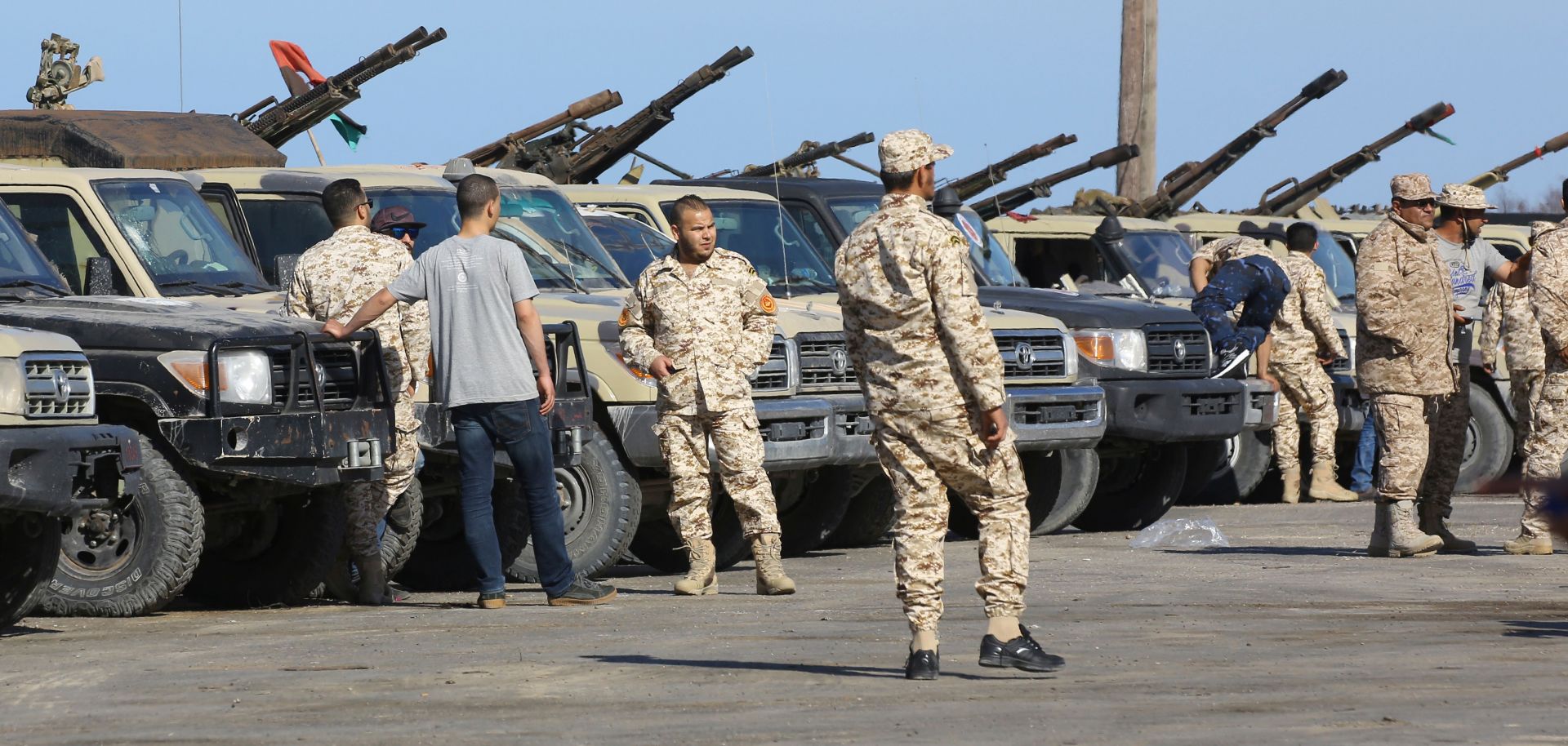GUIDANCE
What a Fight for Tripoli Could Mean for Libya's Future
Apr 8, 2019 | 21:19 GMT

Forces loyal to Libya's Government of National Accord arrive in Tajura, a coastal suburb of the Libyan capital Tripoli, on April 6, 2019, from their base in Misrata.
(MAHMUD TURKIA/AFP/Getty Images)
Highlights
- An offensive against Tripoli by the Libyan National Army (LNA) has bogged down in the capital's outskirts, increasing the risk that the conflict will become protracted.
- Militias from Tripoli and Misrata are presenting a united front against the Khalifa Hifter-led LNA, whose supply lines from its main base of operations in Benghazi are in danger of becoming overextended.
- The militias supporting the Tripoli-based Government of National Accord lack a unified command structure, giving Hifter the opportunity to peel individual units away from the GNA's defense.
- Prospects for the U.N.-sponsored conference planned for April 14-16 to negotiate a national unity government appear dim, but both sides retain an incentive to control valuable territory in Libya's west should dialogue restart in the future.
Subscribe Now
SubscribeAlready have an account?
